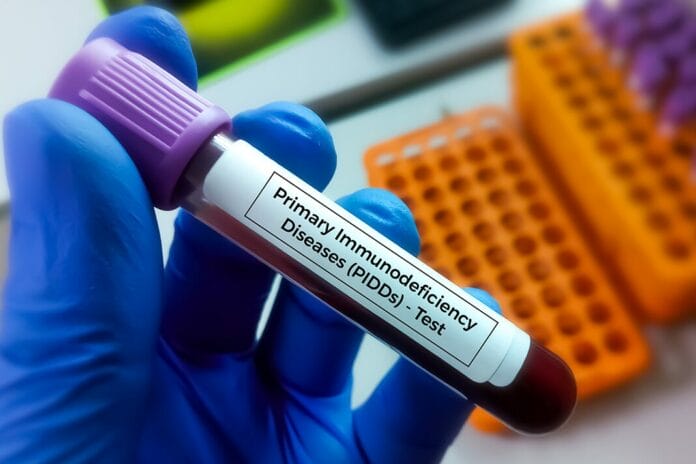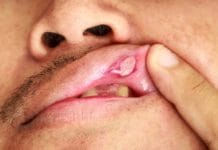A dental patient recently expressed frustration and concern about her son during her hygiene appointment with me. Her son is not a patient of mine as he seeks care elsewhere due to several medical factors. She explained that his ongoing throat soreness with white ulcerations has been cultured, showing Streptococcus mitis, Streptococcus oralis, and occasionally methicillin-resistant Staphylococcus aureus (MRSA).
Little did she know that I am a huge dental nerd, and her simple curiosity about my opinion led me down a rabbit hole of research.
Bacteria – The Good and Bad
While many people view bacteria as bad, we must understand that bacteria comprise 0.3% of our body weight.1 The human body, including the oral cavity, comprises good and bad bacteria. We must bear this in mind when we discuss bacteria. Various streptococci, for example, are a part of the oral cavity’s normal flora.2
Dental professionals are very familiar with Streptococcus mutans and Streptococcus sanguis, the bacteria associated with tooth decay.3 However, more strep variations live within the nasopharyngeal area connected to the oral cavity, which can lead to infections such as strep throat. Strep throat is caused by Streptococcus pyogenes, which is part of the β-hemolytic group A Streptococcus, containing over 120 different strains of streptococcus bacteria.4,5
Infections can occur when pathogenic bacteria enter the body and begin to multiply rapidly.6 Those with compromised immune systems may find themselves at a higher risk for such infections due to their body’s response to improperly defend against illness and host invasions. S. mitis and S. oralis, commensals of the oral cavity, are now recognized as frequent causes of infection in immunocompromised patients and associated with bacterial endocarditis.7
Case Study of My Patient’s Son
My patient’s son is a 23-year-old male who has been diagnosed with common selective immune/antibody deficiency (SAD), fragile X syndrome, and autism spectrum disorder. His mother states that home care is difficult, and his oral care routine is lacking due to his inability to cooperate.
He is well-established with an otolaryngologist, commonly called an ear, nose, and throat physician. Cultures of his throat ulcerations have been collected over the years by his physician and have shown bacteremia, including variations of Streptococcus and Staphylococcus.
SAD occurs when an individual produces normal amounts of immunoglobins, also called antibodies, which protect from infections but do not produce protective IgG antibodies against the types of organisms that cause upper and lower respiratory infections. Each IgG molecule is uniquely designed to protect from a specific pathogen.8
Once a child reaches two years of age, they can begin to fight off these infections more effectively as their bodies develop stronger immune systems. However, those with SAD do not properly develop protection as their bodies do not develop the antibody response to the polysaccharide (sugar-coating the bacteria). Therefore, they lack the necessary tools to defend the body against these microbes. Those afflicted with SAD will have a history of recurrent infections of the ears, sinuses, bronchi, and/or lungs.8
SAD is one of 406 distinct disorders classified as primary immunodeficiencies (PID). PIDs are thought to be rare; however, epidemiologic studies suggest they may be underdiagnosed. Those with any variant of PID are predisposed to a variety of oral manifestations, including candidiasis, herpes gingivostomatitis, atypical dental infections, oral aphthous ulcers, severe periodontal disease, and dental anomalies.9
Neutrophils are the “gatekeeper” of oral immunity, and fully functional neutrophils are essential in periodontal homeostasis as they are recruited to the gingival sulcus and provide a wall of protection against subgingival dental plaque. Therefore, many with a genetic mutation or PID will have a reduction in absolute neutrophil count, predisposing them to periodontal disease and tooth loss.9
Children and adolescents who develop aggressive periodontal disease with premature tooth loss almost always indicate the existence of an underlying systemic or immunologic condition. According to Jung et al., while often underestimated, the dental professional’s role is crucial in detecting clinical signs as it can contribute to a timely diagnosis and result in adequate management.9
Medical Treatment
As stated, early diagnosis is important for those afflicted with PID so treatment can be implemented. Immunoglobulin (Ig) treatment is used to temporarily replace some of the antibodies that are missing or not working properly. This treatment uses IgG removed from plasma that healthy individuals donate. Treatment can be administered either intravenously or subcutaneously.10
Prophylactic antibiotics are a second form of treatment that is given in low doses to help prevent an infection. However, this may increase the risk of developing methicillin-resistant Staphylococcus aureus (MRSA), which occurs when staph infections are hard to treat due to antibiotic resistance. Those who take antibiotics often have a higher chance of developing MRSA, according to studies.11
Other treatments come in the form of stem cell therapy. Additionally, though still considered experimental, gene therapy may be an option but is not yet used routinely.10
The Role of the Dental Professional
The dental professional plays a vital role in the efforts to treat those with PID. With the already stated lack of oral defense, it is important these individuals exercise excellent oral hygiene to the best of their ability.9
Routine and more frequent dental visits are important to help not only keep a visual check on the oral cavity but also to decrease pathogenic oral bacteria more frequently via professional debridement. These individuals ideally should be placed on a three-month hygiene recall. Oral hygiene education is critical to help the patient and/or the caregiver understand the implications of an overabundance of oral bacteria, which affects not only the oral cavity but also overall health.9
Approaches to help reduce the incidence of pathogenic bacteria should also be taken at home. Suggesting the use of an electric toothbrush may be helpful to ensure the proper removal of biofilm. Suggesting mouth rinses or swishing with water within 10 minutes of consuming sugary beverages or drinks will help maintain the pH levels of the mouth.12
For those that are able, recommending a xylitol-based chewing gum may be beneficial in mechanically removing biofilm from the teeth, as well as providing a barrier to inhibit Streptococcus mutans.12
In Closing
While dental professionals are unable to diagnose PID officially, given the frequency in which we see patients, it should go without saying that we could very well be the initiators of getting these patients to a definitive diagnosis. Dental professionals can take what we notice during our assessments and refer to the appropriate health care provider based on our clinical findings.
Because gene mutations in patients with PID are not very symptom-forward, it is evident why many are undiagnosed. While these undiagnosed patients may not be seeking medical answers for a disease they are unaware exists, they are likely to end up in the dental chair for routine appointments, providing dental professionals a valuable opportunity to intervene. In fact, my patient’s son was not diagnosed until he was approximately 13 years of age.
When treating patients, especially children or adolescents, dental professionals should note any factors that may be likely of a PID diagnosis and provide this information to the caregiver. This is another example of dentistry’s importance to the association with overall health.
Before you leave, check out the Today’s RDH self-study CE courses. All courses are peer-reviewed and non-sponsored to focus solely on high-quality education. Click here now.
Listen to the Today’s RDH Dental Hygiene Podcast Below:
References
- Sender, R., Fuchs, S., Milo, R. Revised Estimates for the Number of Human and Bacteria Cells in the Body. PLoS Biology. 2016; 14(8): e1002533. https://doi.org/10.1371/journal.pbio.1002533
- Patterson, M.J. (Ed.). (1996). Streptococcus. In S. Baron (Ed.), Medical Microbiology (4th ed., ch. 13). University of Texas Medical Branch. https://www.ncbi.nlm.nih.gov/books/NBK7611
- Ge, Y., Caufield, P.W., Fisch, G.S., Li, Y. Streptococcus mutans and Streptococcus sanguinis Colonization Correlated with Caries Experience in Children. Caries Research. 2008; 42(6): 444-448. https://doi.org/10.1159/000159608
- Group A Streptococcal Infections. (2022, May 2). Cleveland Clinic. https://my.clevelandclinic.org/health/diseases/5911-group-a-streptococcal-infections
- Mayo Clinic Staff. (2022, November 20). Strep Throat. Mayo Clinic. https://www.mayoclinic.org/diseases-conditions/strep-throat/symptoms-causes/syc-20350338
- Drexler, M. (2010). What You Need to Know About Infectious Disease. National Academies Press. https://www.ncbi.nlm.nih.gov/books/NBK209710/
- Whatmore, A.M., Efstratiou, A., Pickerill, A.P., et al. Genetic Relationships Between Clinical Isolates of Streptococcus pneumoniae, Streptococcus oralis, and Streptococcus mitis: Characterization of “Atypical” Pneumococci and Organisms Allied to S. mitis Harboring S. pneumoniae Virulence Factor-Encoding Genes. Infection and Immunology. 2000; 68(3): 1374-1382. https://doi.org/10.1128/iai.68.3.1374-1382.2000
- Specific Antibody Deficiency. (n.d.). Immune Deficiency Foundation. https://primaryimmune.org/understanding-primary-immunodeficiency/types-of-pi/specific-antibody-deficiency
- Jung, S., Gies, V., Korganow, A., Guffroy, A. Primary Immunodeficiencies with Defects in Innate Immunity: Focus on Orofacial Manifestations. Frontiers in Immunology. 2020; 11: 1065. https://doi.org/10.3389/fimmu.2020.01065
- Types of PT Treatment. (n.d.). My Ig Source. https://www.myigsource.com/primary-immunodeficiency-treatment-types
- Tacconelli, E., De Angelis, G., Cataldo, M.A., et al. Does Antibiotic Exposure Increase the Risk of Methicillin-Resistant Staphylococcus aureus (MRSA) Isolation? A Systematic Review and Meta-Analysis. The Journal of Antimicrobial Chemotherapy. 2008; 61(1): 26-38. https://pubmed.ncbi.nlm.nih.gov/17986491/
- Yousefi, H., Aghamohammadi, A., Rezaei, N. Clinical Recommendations for Oral Management of Patients with Primary Antibody Deficiencies. Expert Review of Clinical Immunology. 2016; 12(4): 359-360. https://doi.org/10.1586/1744666x.2016.1145055












